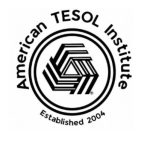As technology rapidly evolves, it brings fresh opportunities for enhancing education in ways that make learning more accessible, engaging, and relevant. For TESOL teachers and educators in general, embracing the latest tech tools can help reach students in innovative ways, creating more interactive, collaborative, and personalized experiences. Here are 10 of the latest ways to focus on education using technology, from interactive platforms to AI-driven tools.
1. Gamification for Engagement
Gamification adds elements of games—like rewards, challenges, and progress tracking—to the learning environment, turning routine tasks into engaging activities. Platforms like Kahoot!, Quizizz, and Classcraft make learning competitive and fun, promoting active participation. Gamification is particularly effective for younger learners, as it encourages friendly competition and creates incentives to complete tasks.
2. AI-Powered Language Learning
AI technology has made significant advancements in education, particularly for language learning. Tools like Duolingo and Babbel use AI to adapt lessons to students’ proficiency levels and track progress over time. AI-driven platforms offer real-time feedback, helping students improve pronunciation and vocabulary retention, making it an ideal companion for TESOL instruction.
3. Augmented Reality (AR) for Real-World Contexts
Augmented Reality (AR) introduces virtual elements into the real world, helping students explore complex subjects visually. Google Expeditions and Merge Cube allow educators to create immersive experiences, like exploring historical sites or understanding complex science concepts. In TESOL classrooms, AR can make language learning more immersive, placing students in virtual environments where they can practice English in real-life scenarios.
4. Virtual Reality (VR) for Experiential Learning
Virtual Reality (VR) takes immersive learning a step further by creating entirely virtual environments. VR platforms like Oculus for Education and ClassVR allow students to experience simulated environments. For language teachers, VR can create scenarios for students to practice English in settings like airports, restaurants, or virtual cultural experiences, adding relevance and fun to lessons.
5. Video Creation Tools for Interactive Projects
Video creation allows students to express their creativity and improves language skills. Tools like Flipgrid, Animoto, and Adobe Spark enable students to make short videos, presentations, or storytelling projects in English. Video creation helps students practice speaking, narrative skills, and even editing, fostering a well-rounded approach to learning English while boosting confidence in a supportive format.
6. Digital Whiteboards for Collaboration
Digital whiteboards like Jamboard, Miro, and Microsoft Whiteboard support collaboration by enabling students to work on ideas visually. These tools are excellent for brainstorming, mind-mapping, or group projects, allowing TESOL teachers to illustrate complex ideas and encourage students to actively participate in discussions. Digital whiteboards bring flexibility to virtual classrooms, helping students work together creatively.
7. Adaptive Learning Platforms for Personalized Instruction
Adaptive learning platforms like DreamBox, Smart Sparrow, and i-Ready use data-driven approaches to personalize lessons based on individual students’ strengths and weaknesses. These platforms analyze student responses to adjust the difficulty level of tasks, making them ideal for TESOL educators looking to tailor lessons for varying English proficiency levels.
8. Speech Recognition for Pronunciation Practice
Speech recognition technology helps students improve pronunciation by providing immediate feedback. Apps like Google Speech-to-Text, Speechling, and Elsa Speak listen to students’ speech and provide suggestions for pronunciation, accent, and fluency. This can be especially helpful in TESOL instruction, allowing students to work on clear, confident speech from anywhere.
9. Virtual Field Trips for Cultural Exploration
Virtual field trips let students experience the world beyond the classroom. Platforms like ExpeditionsPro and AirPano allow educators to guide students through virtual tours of museums, landmarks, and historic sites around the world. TESOL teachers can use virtual field trips to introduce students to English-speaking countries, encouraging discussions and enriching cultural awareness.
10. Learning Management Systems (LMS) for Structured Learning
Learning Management Systems (LMS) like Google Classroom, Canvas, and Schoology streamline the process of organizing lessons, assignments, and assessments. LMS platforms offer a centralized location where TESOL teachers can manage resources, track student progress, and communicate with students, providing structure to online learning environments. They’re particularly useful for maintaining lesson continuity and organization, helping teachers manage blended or fully virtual classrooms.
Final Thoughts
By incorporating these tech-driven tools, TESOL educators can create a dynamic learning environment that keeps students engaged and supports their individual learning paths. Technology is a powerful ally in education, enabling teachers to deliver personalized, interactive, and real-world-focused lessons that resonate with today’s digital-savvy students. As education continues to embrace technology, teachers and students alike can look forward to a more connected, creative, and immersive learning experience.



